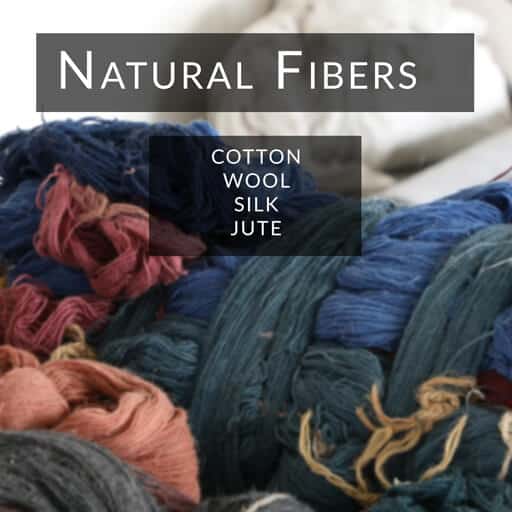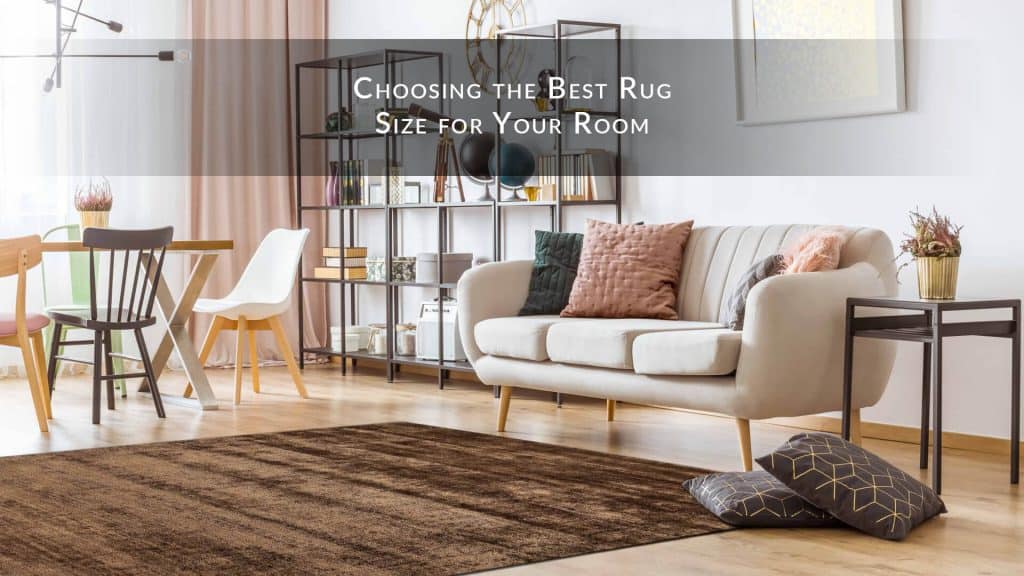With many choices available, it can be overwhelming, but the rug material have a significant impact on the way rug appears, how long it’ll last, and how stain-resistant it will be. The majority of natural fibers, specifically wool, are probably a better option in terms of durability and quality are concerned. But, synthetic fibers benefit from being accessible and offer an array of options.
It is vital to decide on the best rug material for a space. It is also essential to think about how a room will be utilized, the type of traffic it’s likely to receive, and the level of comfort you’d like to have.
Placement of the rug
Rug material selection has a lot to do with the type of rugs you would finally want to settle down with. A very costly wool or silk rug is delicate to be placed in an entryway, but it will give a luxurious appearance to a secure area, such as the living space or bedroom. Even though they aren’t the most comfortable, bamboo-viscose rugs will last for a long time, even in highly trafficked areas like entryways and can be the best rug material.
Use of the rug
Apart from the size of an area rug, the rug material decide its usage in the interior. If it is exposed to unpleasant use, consider a synthetic fiber with strength as seen in nylon or polypropylene. Suppose your rug will be utilized in a space that gets exposed to dampness. In that case, you should investigate a mold-safe engineered material like olefin, which can keep moisture at bay is a decent decision in this present circumstance.
Rugs Quality
Suppose extraordinary and long life isn’t a thought, in that case, you could purchase area rugs in less expensive regular strands like cotton or jute. For an unending assortment of decisions in synthetic fibers nylon, acrylic or polypropylene can be best rug material. Choose silk rugs when you want something extraordinary and opulent. The other types of rugs materials can also make a rug sumptuous depending upon what weaving and what materials have been incorporated.
Rug material determines the rug’s durability, softness, quality, and beauty. Rugs are produced using a variety of materials, including natural and synthetic fibres. Handmade rug, carpet manufacturers use natural fibres to make rugs, while machine-made carpets have synthetic fibres as the base, common area rug materials.
Let us see what the common materials used to manufacture rugs and what quality they give to rugs are:
Best Material for an Area Rugs
Natural Fibers:
One of the most prominent aspects of flooring design currently is the utilization of rugs made of natural materials. Flooring, specifically in the form of an area rug, is one of the main elements of any living space. For a house with an organic look and feel, natural materials must be used. Many of them who want to use completely natural materials have several choices for an area rug as they are admired for their rich, luxurious textures and natural weave.
1. Cotton Rugs
It’s a plant fibre obtained from the cotton plant. Cotton is the most common material used by area rug manufacturers. The Star property of cotton is that it can be dyed easily. So, you can find many color options for cotton rugs. These budget-friendly rugs are soft, easy to care for, washable in the washing machine, and don’t shed much fibre like wool Rugs or common area rug materials.
What we love: The price is usually lower than silk or wool, and it is easy to wash.
Considerations: It does not always last for a more extended period.
Ideal areas: Kitchens, children’s rooms, casual interiors.

2. Wool Rugs
Wool is the second most common material used for rug manufacturing. Wool rug manufacturers use wool extracted from the sheep’s fur to make ultra-soft rugs and much more comfortable to walk around with bare feet. Due to the dense properties of the wool, wool rugs, area rug manufacturers are resistant to stains, common area rug materials.
What we love: Sturdy; excellent stain and water repellency, great insulation properties; warm underfoot.
Considerations: Recommended for damp areas because it absorbs humidity. It is susceptible to fade, and some sheds may occur, but they will diminish with time.
Ideal areas: Any living areas; suitable for high traffic as well.
3. Silk Rugs
Silk rugs are the most expensive among natural fibres. The rugs look much shinier and luxurious, adding a premiere look to your house. Since silk fibres are not durable, they can wear quickly, and hence they are mostly combined with wool to increase its durability, common area rug materials, area rug manufacturers.
What we love: It is an extraordinarily soft and luxurious feel; it has finer details than wool.
Considerations: It needs professional cleaning, and footprints are visible when one treads upon it.
Ideal areas: Low-traffic areas such as the bedrooms.
4. Jute Rugs
Jute is an inexpensive version of natural fibres. Though the strands are coarser, they’re soft to touch. The only drawback is that it can’t tolerate extreme wet conditions, common area rug materials, area rug manufacturers.
What we love: Its durability.
Considerations: Certain varieties are coarse, owing to which there is a slight difficulty in their cleaning process.
Ideal areas: High-traffic rooms, sunny spaces, living rooms.

Synthetic Fibers:
Most of the rugs are produced using synthetic fibers. There are many justifications for why synthetic strands are preferred over natural materials. They are more challenging, have better stain opposition, and are frequently less expensive. Also, by varying the chemical composition and conditions of the manufacturing process, synthetic fibers can be tailored to suit specific preferences. Contrasted with regular filaments, synthetic fibers are typically more water, stain, mold, intensity, and chemically safe.
1. Nylon Rugs
Nylon is a popular, strong, and versatile synthetic fibre used for rug production. These fibres possess the capacity to come back to its original shape even if it is pressed under furniture’s legs and is perfect for high traffic areas, common area rug materials, area rug manufacturers.
What we love: Best rug material in terms of durability and stain-resistance
Considerations: This material does not have breathing ability, making it unsuitable to be placed in damp areas.
Ideal areas: Indoor-outdoor areas, living areas.
2. Polyester Rugs
Polyester rugs are strong and durable but less than nylon. They mimic the softness of some fibres and are less likely to get many wears, common area rug materials.
What we love: Polyester is a very soft fabric, and it’s one of the best rug materials that are most affordable and easy to clean.
Considerations: It does not always have a luxe feel
Ideal areas: Indoor-outdoor areas, living areas.
3. Olefin Rugs
This synthetic fibre is known to resemble the properties of natural wool. These are thinner than the wool yet soft and stain-resistant. These Area Rugs Manufacturers fade their color very slowly to be used outdoors and indoors, common area rug materials.
What we love: They are inexpensive and moisture resistant.
Considerations: it is comparatively less durable than the other fibers. It is more suited to lower-profile loop area rugs with less demand for a higher degree of resiliency.
Ideal areas: Indoor-outdoor, Bedrooms. Kitchens, rooms with direct sunlight.



